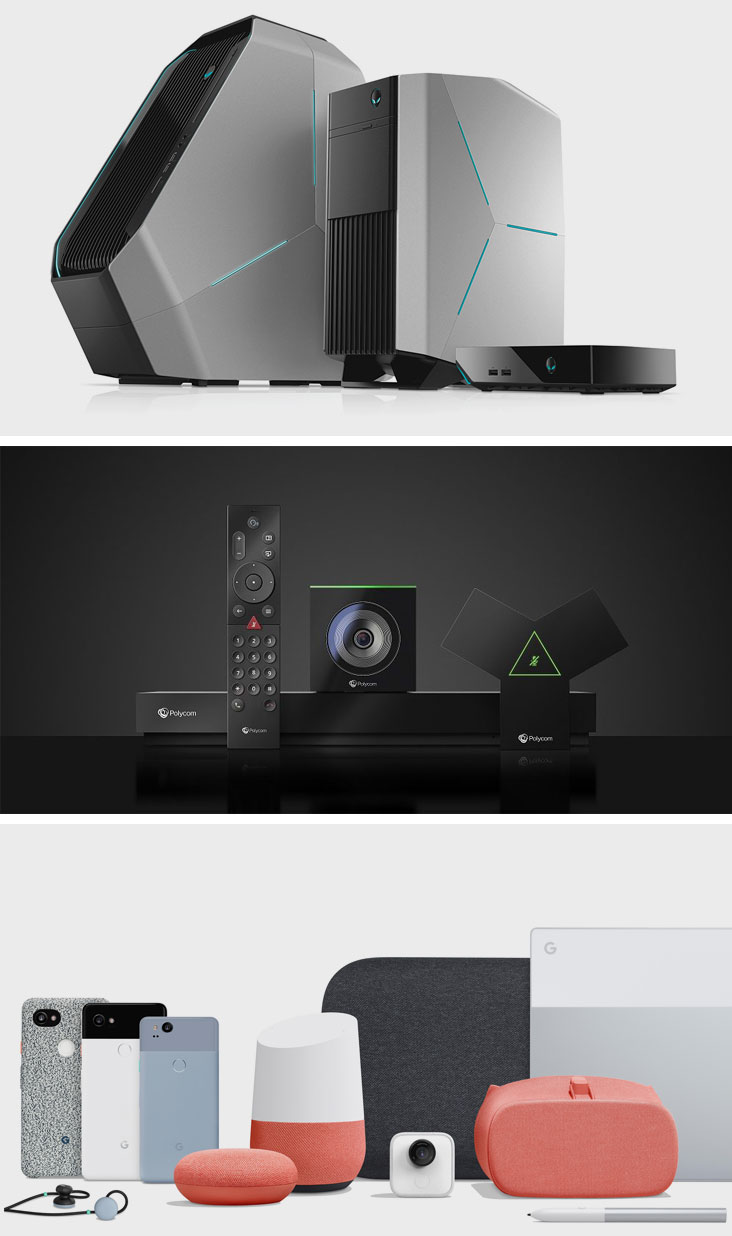
Article
Build Your Brand Into Your Design Language
From involving pivotal stakeholders to setting a timeline for updating products with your new design language, this is your step-by-step guide.
In part one of this series, we discussed the challenges design leadership faces during the early stages of implementing a design language. Now it’s time to transition from advocating for design language to creating one. This is a critical phase of the process. You need to define who you are as a brand today, who you want to become in the future, and what (if anything) will carry over.
How to Lay the Foundation for Your Brand to Communicate with the End User
You are now in the part of the design process known as the “fuzzy front end.” The focus is on communication and messaging, not nuts and bolts. You’ll often be dealing with abstract concepts. It’s important to have all of the design council involved, but expect the marketing, design, and leadership representatives to be particularly active during this part. If there’s one task that can’t be overlooked, it’s getting everyone in the same room and forcing them to talk about the company’s identity.
Your goal is to define the structure around your brand values. Then you need to turn that structure into actionable points that can be used to generate concepts. One way to start is by defining a select group of verbal attributes that clearly and concisely describe your brand’s positioning or core values. Taking these into account early in the process assures that the visual brand language is built on a solid foundation.
You may see some eyes rolling at the prospect of spending any amount of time arguing about the difference between two words that on any other day would be interchangeable. Who cares if the user perceives the brand as “premium” instead of “luxury” as long as the product works, right? For those who take this skeptical stance, you’ll have to expend a bit more effort extracting their thoughts. Have them talk about their direct projects/products. What makes them passionate about what they do? Help them understand that the customer needs to see this passion through the brand experience – this is your way of communicating indirectly with the end user.
Once verbal attributes have been selected, things begin to become a little more substantive. The next challenge is strategically tying these attributes to the user experience. What will fall under the umbrella of the design language? Hardware, software, branding, and badging are among the numerous elements that could be affected.
Overcoming the Abstract to Create a Solution Space
For simplicity, let’s focus on the pivotal hardware aspect that you’ll assuredly need to address. But keep in mind that a design language can reach much further.
Begin the transition into generating design concepts by translating verbal attributes into visual attributes. First, use the verbal attributes to gather a large selection of relevant imagery. Make sure the images contain finite elements that can be referenced in the design phase (form, color, material, pattern, etc.). Then, along with the design council, discuss which images are the best visual representation of the verbal attributes.
This may sound straightforward, but there are hazards along the way. One of the most common pitfalls is stakeholders getting too hung up on the object in the image versus how the content of the image describes the selected verbal attribute. This may sound like semantics, but it is a critical distinction that ensures the design council gets value out of this activity.
If the group is selecting images for an attribute like “rugged,” you may hear calls for heavy machinery or trucks. Yes, these are things that are rugged, but that’s not the question being asked. What you’re after is the essence of rugged. Is it exposed fasteners? Thick chamfers? Over-molded bumpers? Blocky, heavy silhouettes? If that piece of heavy machinery really communicates your brand, great. Just make sure you’re selecting the right images for the right reasons.
The last tip for this part of the process is to give it as much time as possible. Exercise patience and encourage the rest of the council to do the same (within reason). You could compare this phase to pouring the foundation for a house – and you don’t want to start with a cracked foundation.
Selecting Hero Products to Streamline Concept Development
Finally, the rubber meets the road. All of the hard conversations and planning are about to translate into physical concepts. However, ideation and concept development techniques are documented at length across a variety of sources, so that won’t be the focus here. This isn’t a complete bait and switch – there are unique challenges to address when creating concepts within the framework of a fledgling visual brand language. Primary among them is that you’re likely working on multiple products instead of one.
Designing an entire family of products at once while addressing their individual complexities is too large of a task. To streamline the process, it’s much easier to select a small group of high-value products that serve as a baseline. These are called “hero” products, and selecting the correct candidates is a process in itself.
In large organizations with multiple product lines/families, there may be some initial trepidation about where to apply the language first. If no one wants to be the guinea pig, appeal to their ego. Help them understand that this is a high-visibility effort and turning point for the brand. Emphasize that the work they do now will have a lasting effect on the company for decades to come. You want to be part of the reason your brand is viewed as progressive and design-focused, don’t you?

Whether you have too many volunteers or not enough, a roadmap must be laid out to strategically select products that will be integrated into the language. Which products are due for a refresh? Which will have elements that can translate across future products (or other product families within the portfolio)? Establish a timeline so the group can see how the hero products pave the way.
Make Smart Decisions About Legacy Products & Your Design Language
Another key is to decide how, or in some cases if, legacy products will be integrated/affected. One strategy for bringing these products into the fold is to dissect them for potentially overlooked design elements (whether intentional or not) that are identifiable and can help tie the future with the past. Performing this task early in the process ensures that these elements are captured in your visual attributes if legacy integration is deemed worthwhile. Just make sure the selected referential details are actually providing value to the design language. Otherwise, they create unnecessary constraints. If they are not providing value or the brand is heading in a different direction, it may be best to start with a clean slate.
Managing Constraints During Ideation
In the initial stages of developing a design language, you need to have enough definition to communicate the concept without getting stuck in the weeds. You’re laying out the vision for the language. These initial concepts are simply the vehicle. Look at them for how well they communicate brand values, not whether they can be molded or will cost too much. Don’t ignore these important considerations completely, just don’t let them dominate decision making. First decide if they look like a family, then figure out how to implement them.
Capturing the Design Language with the Right Documentation
Once a direction is chosen, it’s time to build guidelines that will influence future products/experiences. Documentation isn’t as fun or sexy as concept generation, but it’s possibly more important. In fact, the design language document could outlive the hero products it was based on.
By now, it should go without saying to make sure all of the design council is involved every step of the way. Frequent input is needed while the guidelines are being created to ensure that the needs of each stakeholder are met. This is also the best group to pressure test early iterations of the guidelines.
You may encounter friction deciding what will be specified in the design language and what will be left open for interpretation. Unfortunately, this can only be determined on a case-by-case basis. As a general rule, base this decision off of the scope of the visual brand language. Start with a broad view, and narrow in as necessary. Overconstraining a language for a large number of products will lead to confusion and frustration. Likewise, underdefining a language intended for a single line of similar products undermines the language by providing too much design freedom. Additionally, capturing what not to do can be just as important and effective as showing what to do.
Another helpful filter is to decide who is supposed to use the guidelines. Is it for designers only? Or will engineering and marketing be expected to use the design language as a part of their decision-making process? The answers to these questions will influence the content and method of delivery. It’s easy to jump straight to an in-depth document as the solution, but there are other effective ways of catering to different audiences. One example is an immersive experience that allows participants to walk through the language development process and interact with products first-hand. This is particularly useful for the visually inclined and serves as a great customer-facing opportunity that shows the brand’s dedication to design.
Let Internal Stakeholders Drive Your Distribution Strategy
While deciding who the document is intended for, also decide who will enforce it. Is it the entire design council or a core group? Does it fall upon the individual department/section heads? Are there purpose-built checks and balances across teams, or is the design language intended to increase autonomy and efficiency? Build in this structure as a part of the strategic rollout, and include contact information for anyone who has a question about the language moving forward.
Use accepted internal communication systems so anyone can access it – this document should not be privileged information. You want your team designing toward your brand’s future, not toiling in the past. It can also be helpful to hold workshops or seminars that introduce the design language to internal audiences. These events mark a distinct turning point toward the future. Lastly, make sure to exercise revision control so everyone knows they’re working from the most current guidelines (and what has changed since the last round).
If a consultant or agency helped create the design language, they can also play a key role in enforcing it moving forward. This may seem counterintuitive, but high turnover in key roles responsible for controlling design language guidelines is not uncommon in large companies (or start-ups for that matter). Having an outside partner who serves as a gatekeeper can provide a consistent voice over time with a focus on maintaining the design language.
Success is a Process, Not A Destination
Creating a design language is an arduous process, but one that pays massive dividends both internally and in the eyes of your customers. There are many barriers to overcome – including convincing others of the need for a visual brand language, assembling a team to steer the process, defining who you want to become, translating your brand values into hero products, and implementing the language across your organization. However, if you accomplish all of these, your brand will be set up to deliver high-impact solutions for the long term.





